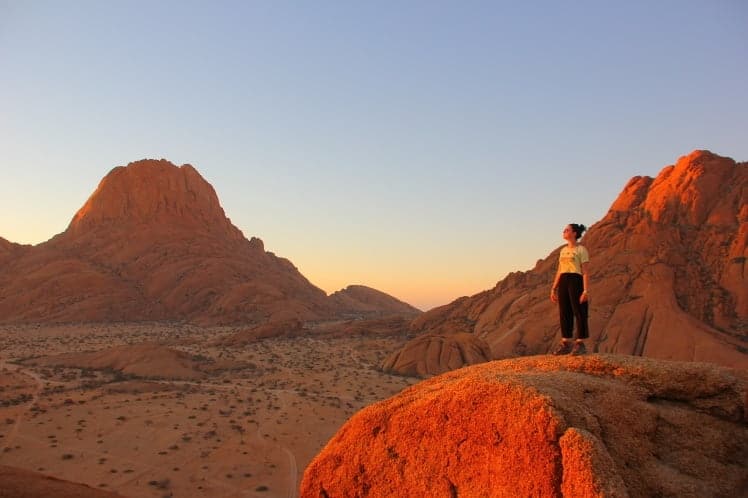It was the 30th day of my amazing African adventure and I couldn’t believe I had been driving around this continent for a month now! After visiting so many amazing places already, next up was visiting Damaraland and Spitzkoppe.
On this day, we left the spectacular Etosha behind and travelled onward through the desert, to Damaraland and Spitzkoppe. As we departed Etosha we were fortunate enough to be greeted by a few more animals, waving us off on our journey. We saw a male lion, with two more far off in the distance (binoculars were necessary at this point!), some ostriches, zebras and giraffes.
Visiting Damaraland and Spitzkoppe was part of the Serengeti, Falls & Cape Town Overland: Sunsets & Safaris tour with G Adventures.
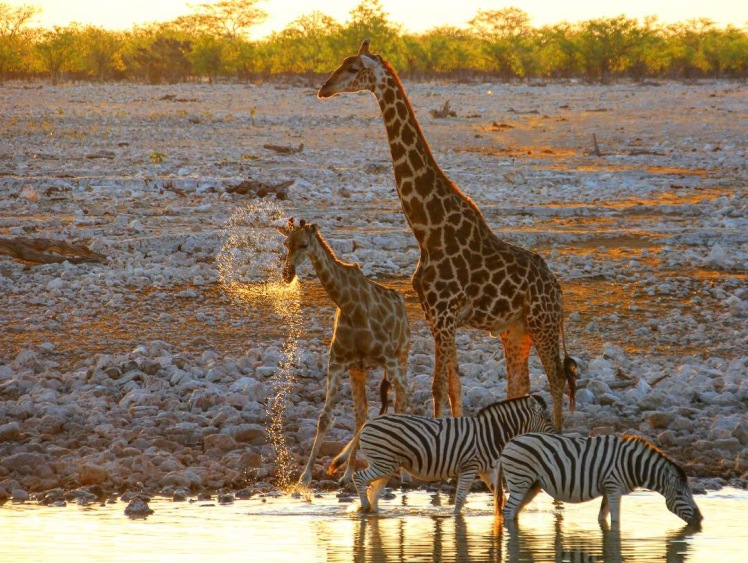
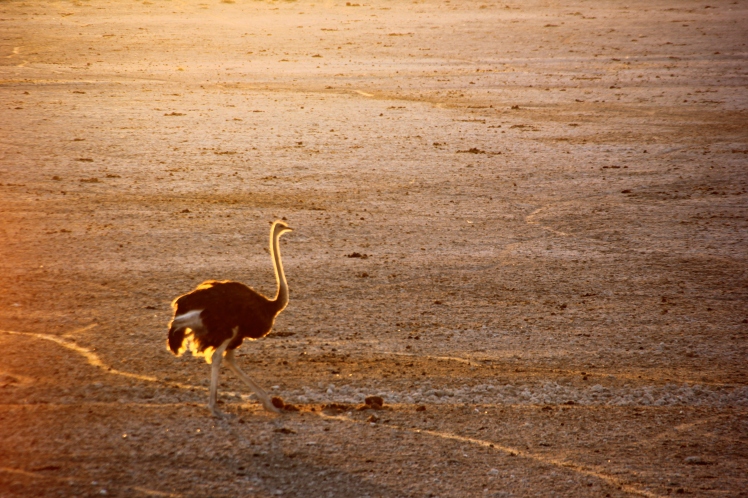
We even witnessed some springbok “spronking” (a comical four-legged jump).
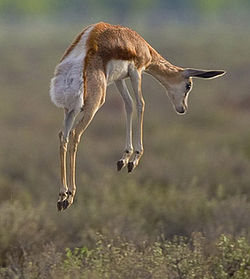
Starting the journey to Damaraland and Spitzkoppe
Our journey was a bumpy one, and with 70% of Namibian roads being dusty and uneven, we wouldn’t return to paved roads until we reached South Africa. We stopped off to see some enormous termite mounds, and although they weren’t of much interest to our Aussie travel friends because they can be seen in Australia too, I found them fascinating.
There are five types of termites:
- The “workers”, who build the mounds. They are sexually immature, blind, wingless and the smallest of the three.
- The “alates”, who are winged and have no purpose in the group. They simply hatch and fly.
- The “soldiers”, who protect the mound, have sharp jaws and defend their colony.
- The “queen”, who has the longest lifespan of any insect in the world, with some queens reportedly living up to 30 to 50 years. They are the only ones who lay the eggs and so the future of the mound depends on them. If the queen does die though, her daughter can take over.
- The “king”, who mates with the queen for life and fertilizes the eggs.
All termite mounds in Africa lean to the west because of the sun and the wind, there are 3,100 species of termites and millions live in each mound. Aardvarks and other animals attack termites for food and the local people will also eat the alate and soldier termites, as they are full of protein and are delicious when fried, according to our CEO and guide Wellington. As well as a food source, the locals use the soil from the mounds to build houses.
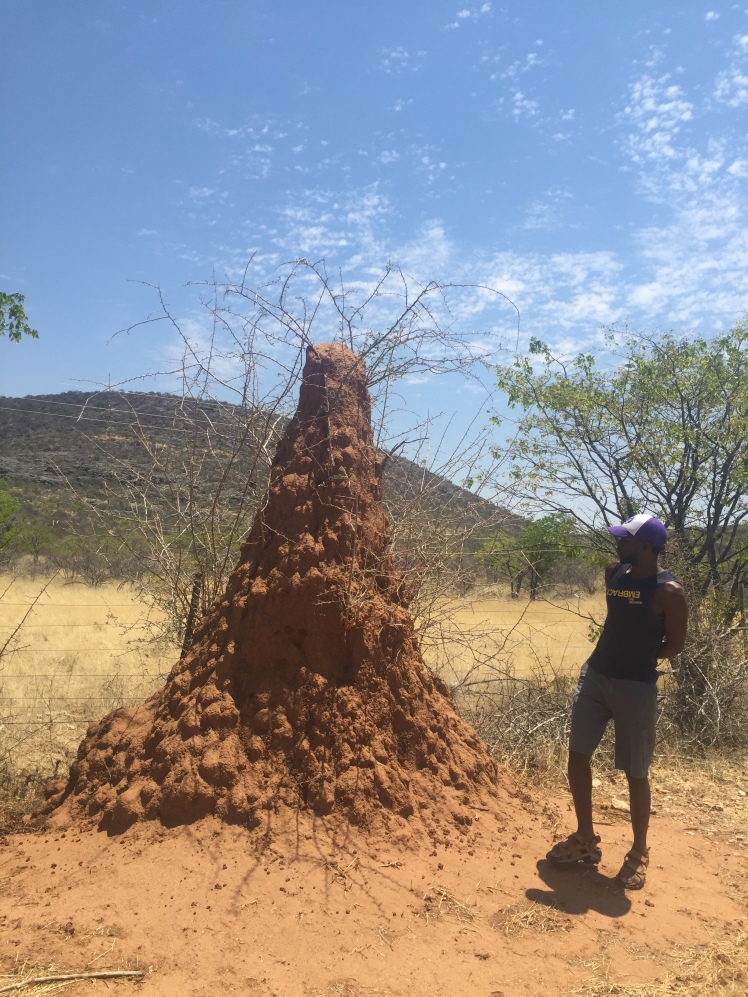
We additionally noticed the nationwide plant of Namibia, Welwitschia mirabilis. Endemic to the Namib Desert, it will possibly dwell as much as 2,000 years and grows sideways.
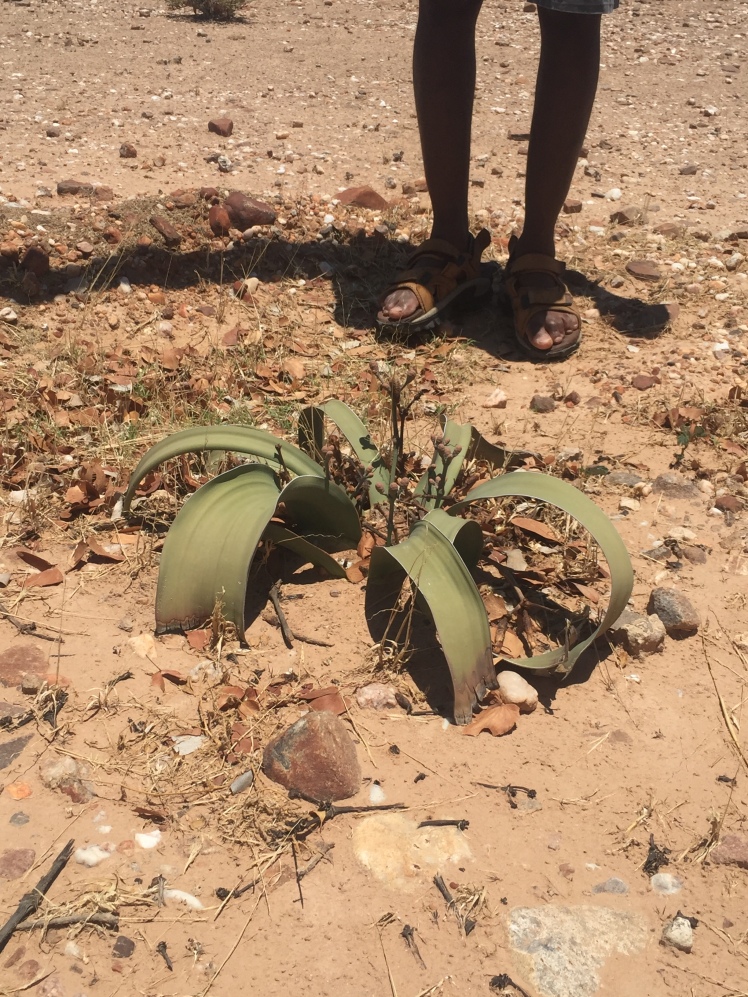
The final stop before reaching Damaraland
Our final stop before reaching Damaraland was a national monument: Namibia’s Petrified Forest.
Here we were taught about a phenomenon that began around 280 million years ago, when the end of the Ice Age caused an enormous flood. Trees were uprooted and ended up in Namibia, where they were buried underground and changed form due to the penetration of minerals caused by pressure. They had become petrified, meaning they were now trees made of stone. As a result of erosion, the trees reached the earth’s surface and were discovered by two farmers in the 1940s.
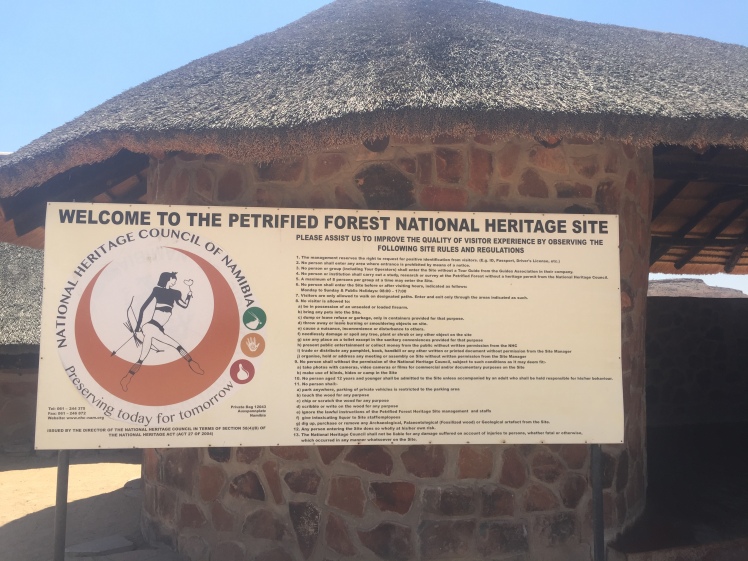

Learning about the Damara culture in Damaraland
Once we arrived into Damaraland, we took a tour of the Living Museum to learn about the lost culture of the Damara people. Though they no longer live in the traditional manner, the tour aims to keep the culture alive for future generations. We watched singing and dancing and the men demonstrated their fire starting ability, which we were told was a skill they needed originally, in order to impress a woman into becoming their wife. We also entered the women’s workshop, where they were creating jewelry and knickknacks out of materials such as ostrich egg shells, seeds and porcupine spikes.
We learnt about the traditional medicines and the Damara peoples’ resourcefulness in their creation of tools. For example, they would use springbok horns to make weaponry for hunting that could also be used for pipe smoking.
Their clothing was made from goat leather and we observed a game they played for hours and would take very seriously (which I’d seen played in Zanzibar), called Bao. This would be used to teach their children how to count in the Khoekhoe language.
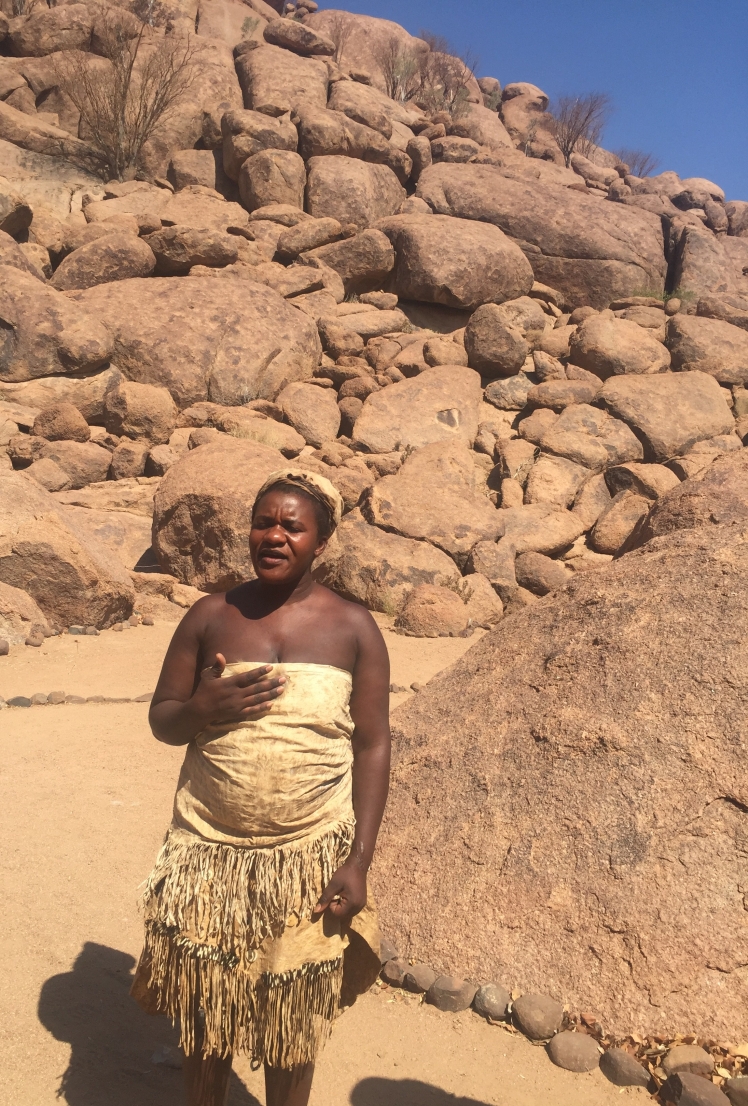
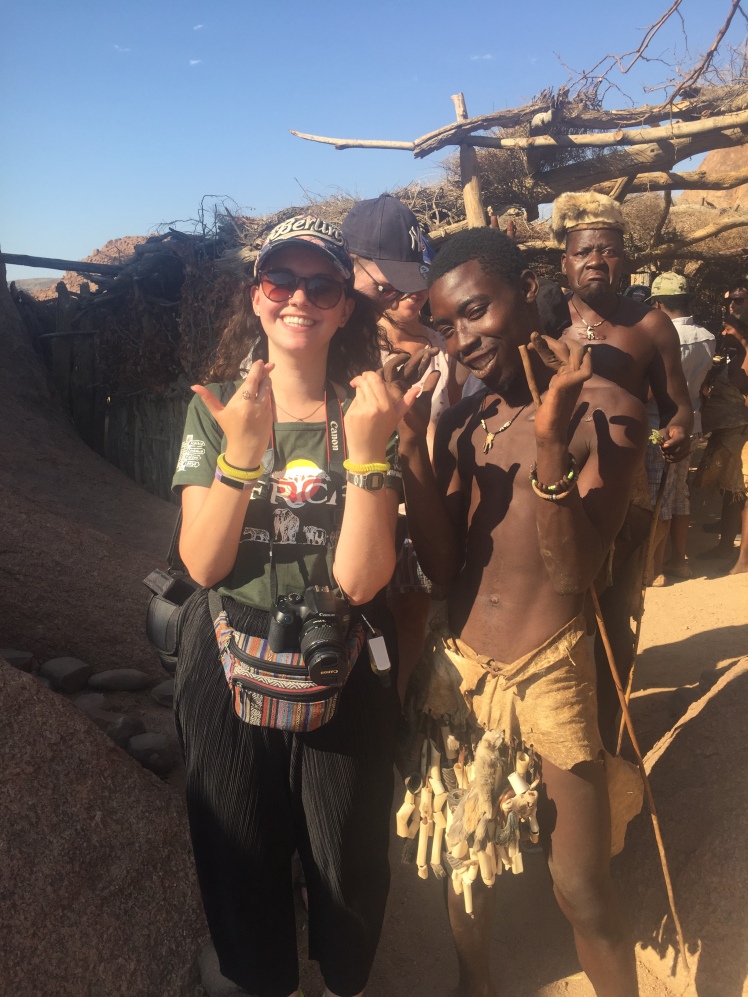
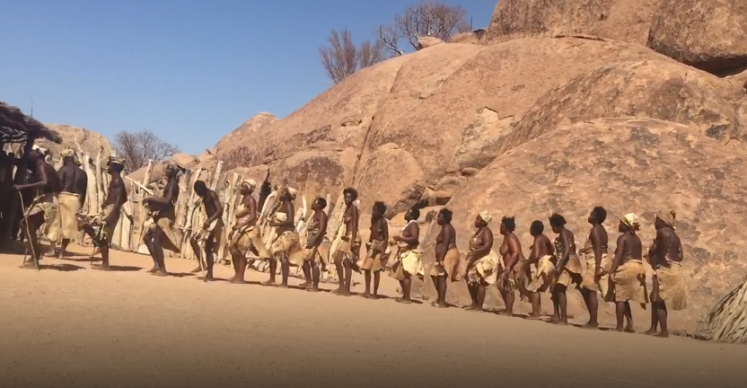
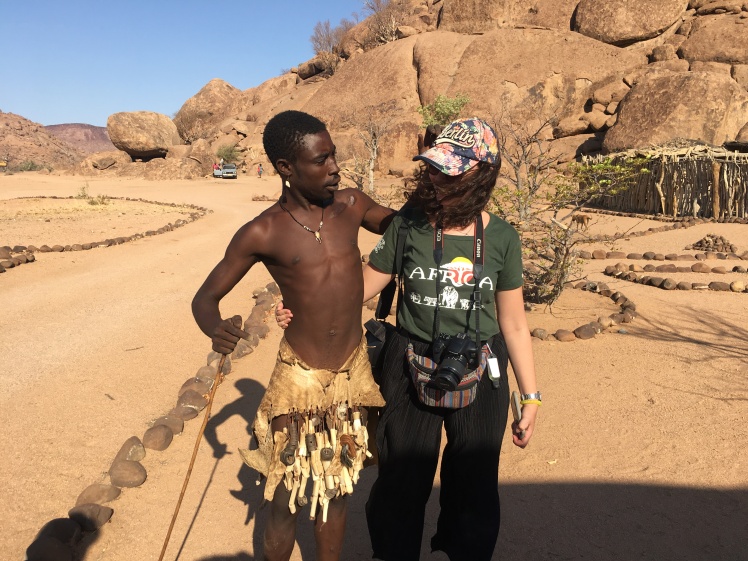

A tour of Twyfelfontein
The following day began with a tour of Namibia’s first UNESCO World Heritage Site, Twyfelfontein. Afrikaans for “doubtful fountain”, there is a spring here which seldom receives rainfall (hence the name), but it is best known for its multitude of prehistoric rock engravings.
These were made during the early Stone Age and depict hunting maps, footprints, waterholes and animals, including giraffes, elephants, ostriches and rhinos. Some of the artists must have been nomads because there were even animals such as penguins and seals, which would’ve been found elsewhere.
The engravings were made using quartz stones and were discovered in 1921, but it was never clear exactly when they were made, with historians predicting anywhere between two to six thousand years ago. Thought to have been the work of Bushmen or Nama artists, there are more than 2,500 rock carvings and paintings in the area.
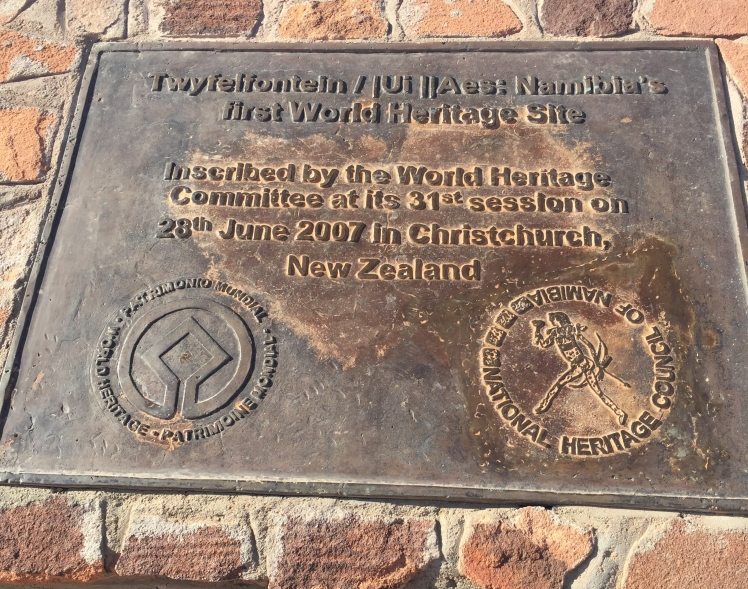
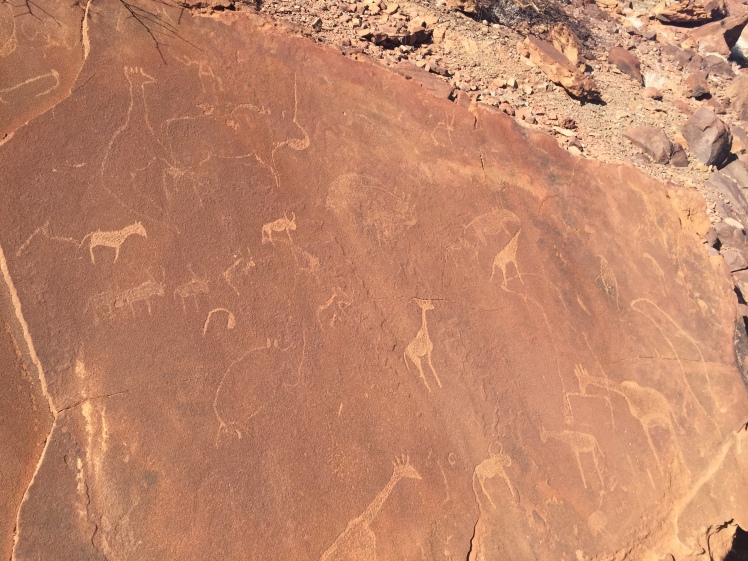
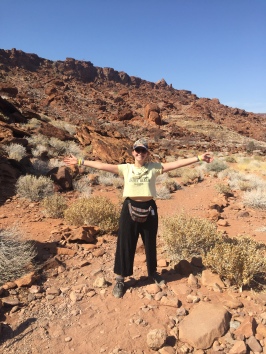
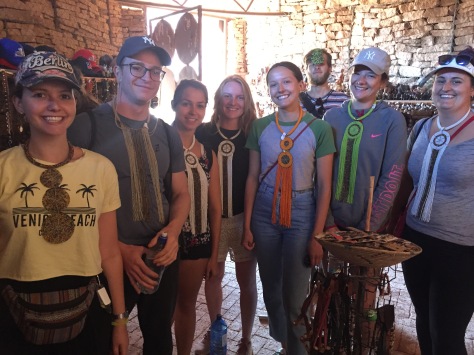
From Damaraland to Spitzkoppe
It was now time to leave Damaraland and travel south towards Spitzkoppe. En route we made a few pit stops and the first of which was at a village populated by Herero people.
We were encouraged to explore their markets, as tourists buying their handmade wares was their main source of income. I bought a beautiful bag and we gave the children water. Our CEOs told us that it was important not to give them food or sweets, as we don’t want to encourage a begging culture, we cannot give them the same tomorrow, and they may not be able to brush their teeth after eating sweets.
Wellington also referred to the saying:
‘GIVE A MAN A FISH, AND YOU FEED HIM FOR A DAY. TEACH A MAN TO FISH, AND YOU FEED HIM FOR A LIFETIME’.
This phrase stayed with me and is something that it seems G Adventures feel strongly about because they support so many worthwhile enterprises which do exactly this.

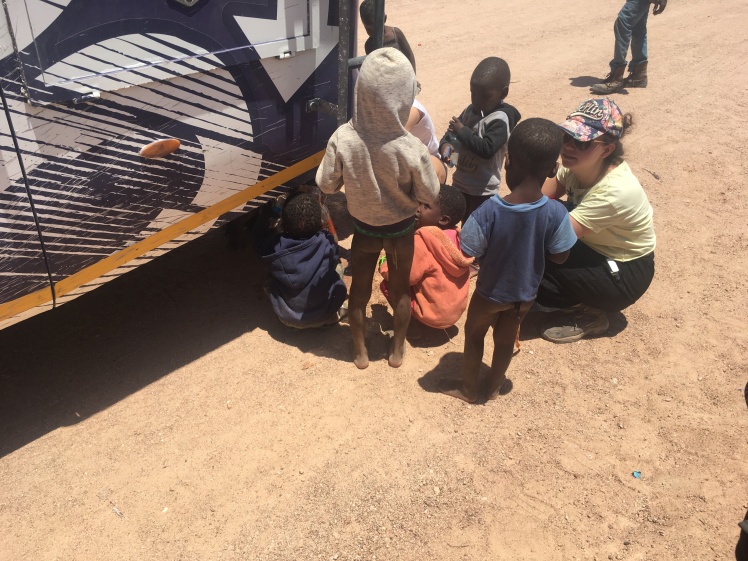
We passed Brandberg Mountain, which at 2,573 metres, is Namibia’s tallest mountain. We also stopped to meet some Himba people, who are indigenous and have an estimated population of around 50,000 living in northern Namibia.
Wellington told us some information about this fascinating group, whose ancestors can be traced back to the early 16th century. They carry out arranged marriages from the age of 10 and their perception of wealth is reflected in the number of cows that they own.
They wear special contraptions around their ankles to protect them from snake bites and they make their own natural hair extensions, sun cream and mosquito repellents. Women are not allowed to use water for washing, as traditionally there were many great droughts and only the men were permitted to use this scarce commodity.
Therefore, the women used (and still use) smouldering charcoal which they would mix with herbs and wash in the smoke produced. Similarly, the men engage in polygamy but the women are forbidden from doing so.
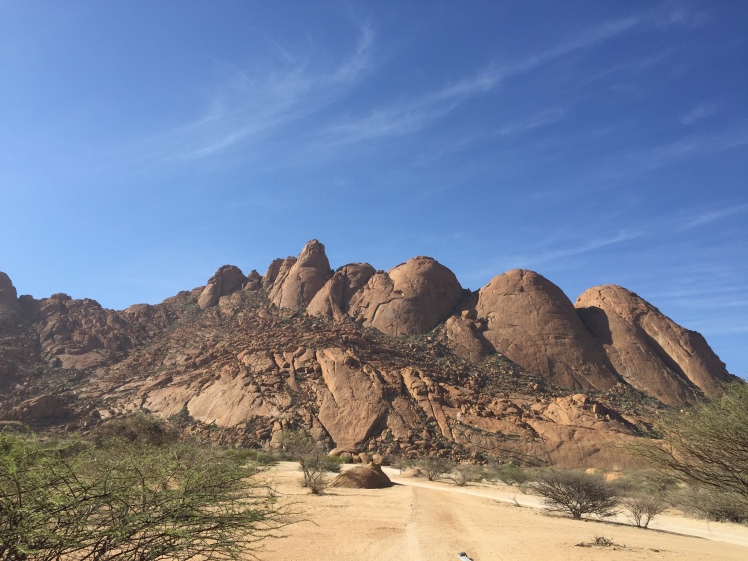
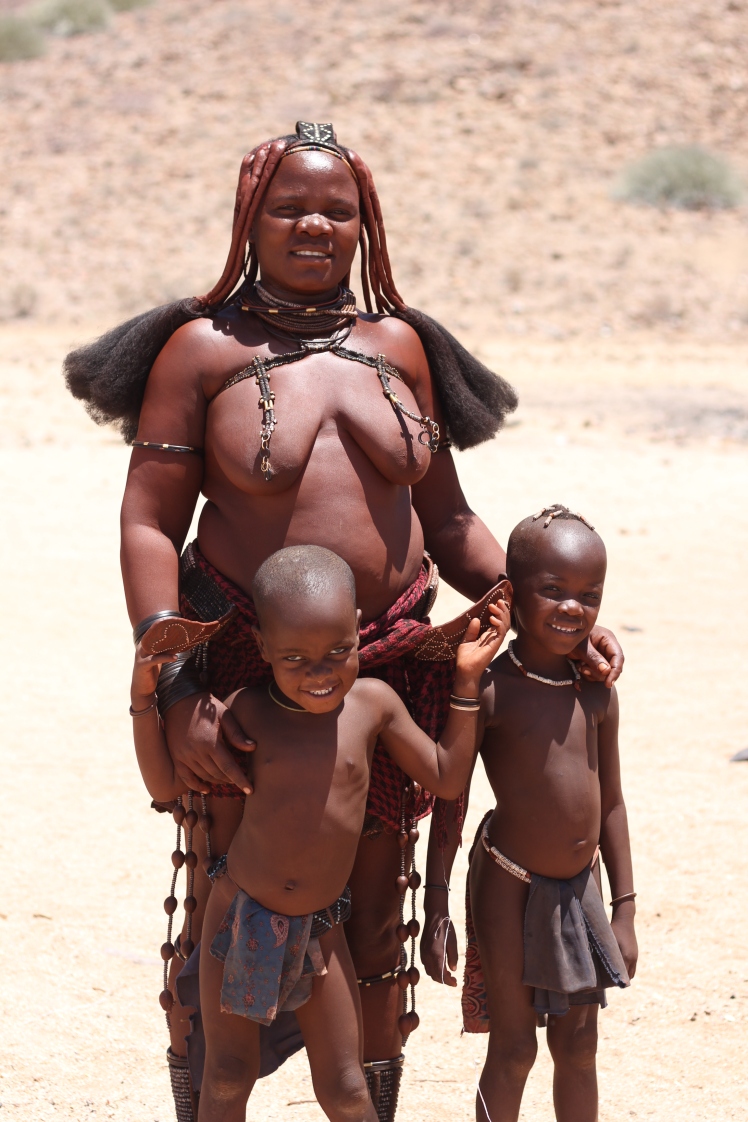
Arriving in Spitzkoppe
As we arrived into Spitzkoppe we noticed its many granite peaks in what seemed like every direction, as they stand out dramatically from the flat surrounding plains. It was beautiful to walk around this almost-700-million-year-old area, and we spent the rest of the day climbing and exploring the breathtaking landscapes in the Namib Desert.

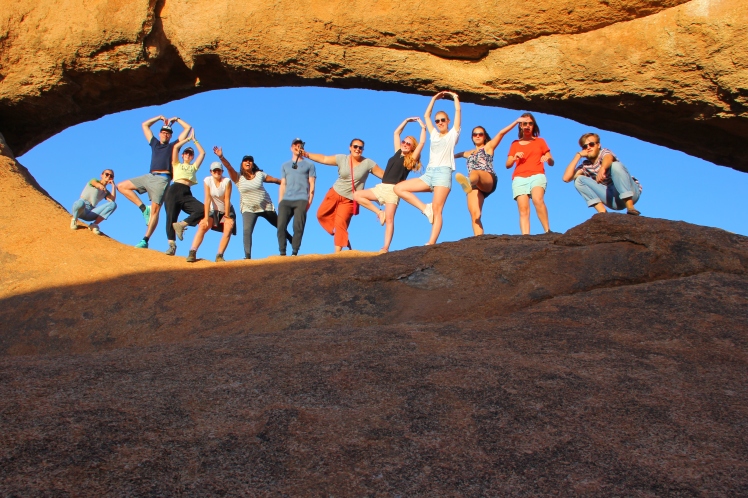
Just before the sun set, we clambered up one of the peaks and watched from above, listening to the bird song and gazing at the natural beauty around us.
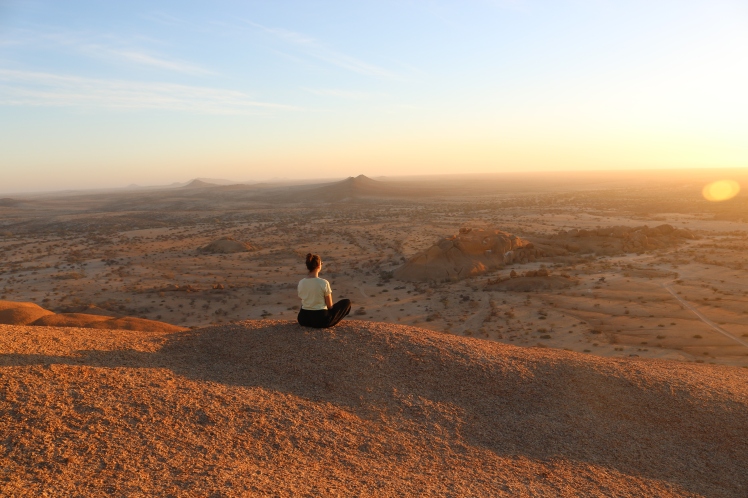
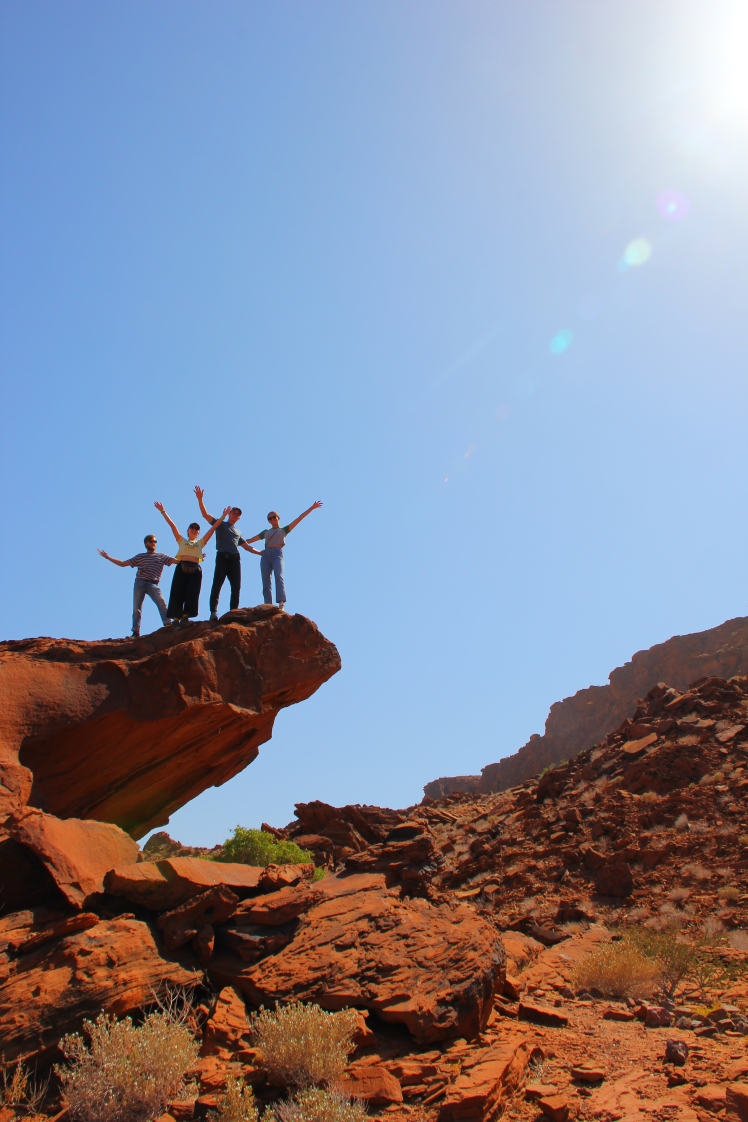
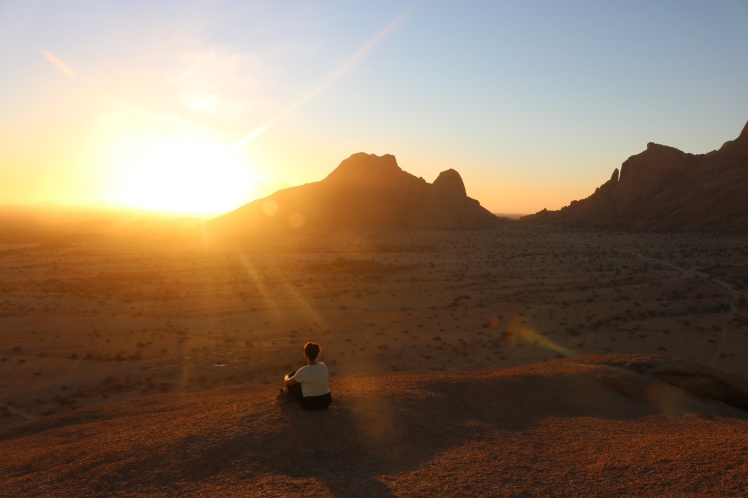
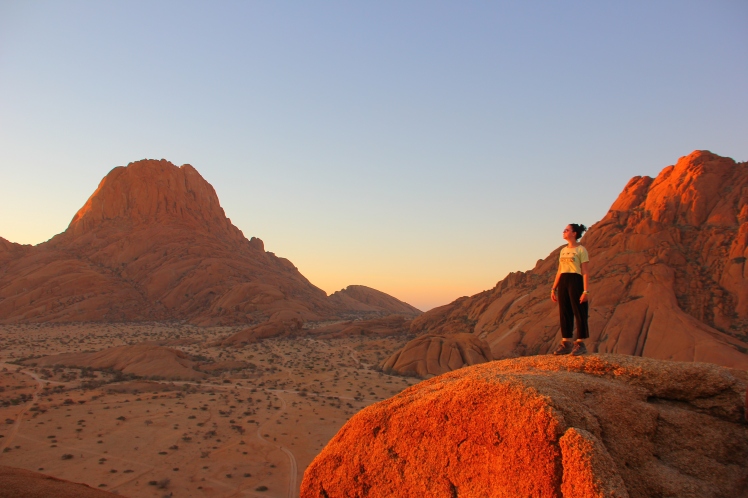
CLICK HERE TO VIEW MY 360° VIRTUAL TOUR OF SUNSET ON ONE OF SPITZKOPPE’S PEAKS!
In the evening, we enjoyed each other’s company around the campfire, singing and stargazing at the incredible night’s sky.


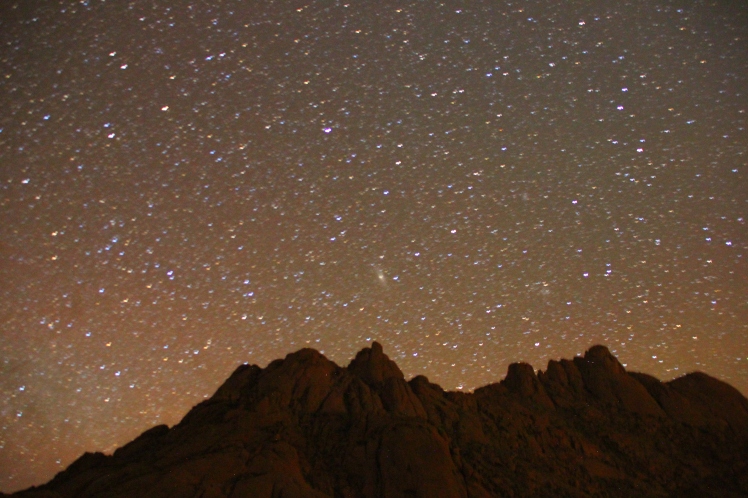
Next up, we ventured to Swakopmund, where we would be exploring the Namib Desert by board instead of foot.
Thinking about exploring Namibia? Check out the Namibia tours offered by G Adventures – many include visiting both Damaraland and Spitzkoppe.

